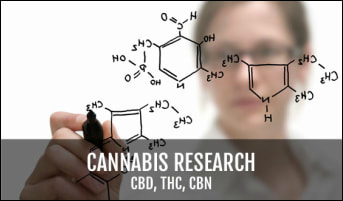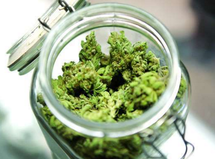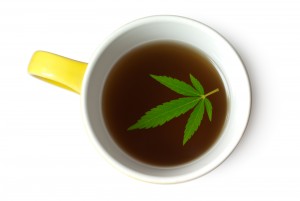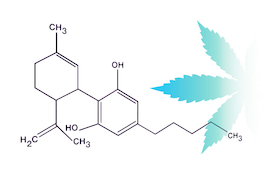|
Sometimes there is no solution to a problem. Chronic pain is like that. You don't get rid of it. You just learn to live with it, doing the small things to make the day go by with some small reward of laughter. - Dr. T  Why continue living? Not that there is much choice in the matter.
Thoughts on PAIN! I have a rather too intense, intimate and enduring personal relationship with pain that continues to intensify. Pain is a unique experience as unique as the individual experiencing the pain. Pain is more than physical. It is emotional and psychological as well. Never belittle another person’s pain. Never consider your pain to be greater than anyone else’s. Invisible does not mean nonexistent. Pain only kills if it causes shock and death is due to shock left untreated. Pain that intensifies over time can seem to endure for eternity. The desire for the end of existence can result from acute chronic pain lasting decades and other major complications of life. As if there is life without complications. Death does not guarantee the end of pain and suffering. Pain is part of the shit that happens to the living due to living. It is thought that the dead do not experience pain. Pain is the hard way to learn important life lessons. Pain is not something to be distributed, propagated, shared or spread. Empathy is acceptable; sympathy is not. I do believe that I have warned you upon several occasions that I have a twisted sense of humor. -Anonymous A After being with hundreds of dying folks, my belief is that this human experience is the bottom rung of the ladder and that as spiritual beings it only gets better! We are spiritual beings having a human experience, not the other way around.
-Anonymous B  I'd like to introduce you to “Flore”, a newly opened Cannabis retail store. Flore is located at the historic corner of Noe and Market in San Francisco’s Castro neighborhood. More than 25 years ago, Brownie Mary handed out Cannabis infused “treats” to AIDS patients on this corner. Just down the street, Dennis Peron’s Cannabis Buyers Club became the world’s first medical Cannabis dispensary. About the same time, I consulted my first medical Cannabis patient just a few blocks away. Northern California has been involved in a Cannabis culture since before the "Summer of Love". In the 1960s, anti-war and civil rights were at the forefront of social discussion and debate. Considering current events, it amazes me how history repeats itself. Cannabis stood for rebelliousness, iconoclasm, and radicalism. Although we may have changed, the plant hasn’t changed. As a community, perhaps we have evolved to understand Cannabis heals the prevalent disorders of the day. After Cannabis and other psychedelic experiences, Harvard psychologists Timothy Leary and Richard Alpert questioned the status quo. Their experiences with Cannabis as a mild mind-altering escape from reality gained popularity. Dr. Leary and Dr. Albert reinforced the prevailing notion that science instructs wellness and medicine. Today, communities find that “turning on” to Cannabis also manages pains, helps addiction, improves sleep, and relaxes a person from the mental and physical stressors. Cannabis bridges the herbal apothecary of the past to the pharmacy of the future. Our work at the CESC, a nonprofit Cannabis research organization, has always sourced community wisdom. Federal and state regulatory efforts address limited challenges presented by Cannabis. Relying on top down federal and state guidance does a disservice to a community that has used Cannabis for decades. Yet, our community is thirsty for knowledge. Although we have experienced relief of aches, pains, and stressors, we want to understand which Cannabis products give energy, and which helps with a good night’s sleep, which stimulates hunger, or, yes, even arousal. Dr. Abrams and I started our clinical research by examining how communities use aroma to make distinction between Cannabis flowers. The investigation eventually led to chemical characterizations of Cannabis flowers and predicting the "Sativa" vs "Indica" effects. Our studies are a paradigm shift to traditional FDA clinical studies. Using community sourced data, we learn quickly and at very little expense. Flore sits at ground zero of the Cannabis culture in northern California. It will be the place where CESC launches its next phase of studies on Cannabis dosage and efficacy. “Our initial work focused on Cannabis flowers. Today we are ready for a new phase of study,” explains Dr. Abrams. “We want to dive into a broader side of Cannabis - processed (non-flower) products.” Processed Cannabis products allow choice, provide variability, and are amenable to scientific precision. As well, consumers are interested in reliable and consistent Cannabis products that result in characteristic anticipated effects. As we mature, the Cannabis industry matures, where getting “high” is just one of many available choices at a Cannabis dispensary. The CESC believes that effect claims are possible through observational study. In fact, large cohort Cannabis observational studies may be more predictive than smaller double blind randomly controlled trials. With help from the community, the CESC will make effect claims available to the public for any product available at Flore. Our mission is to provide information for each Cannabis product categories (gummies, vape carts, topical salves, etc.). We see this information as critical for both consumers and the industry. Dr. John S. Abrams and Dr. Jean Talleyrand are co-founders of the CESC Flore is located at 258 Noe St, San Francisco, California Considering that the Russian-Ukrainian war, misaligned SCOTUS decisions, and an insurrection are the dominant topics in the news, I will highlight this holiday with a promise to evolve with more compassionate and responsible access to Cannabis
I’ll start by paraphrasing a story by Will Fritz of the NY Cannabis Insider titled, “Another medical marijuana patient describes ongoing problems with price, service, and access”. The story is part of an ongoing series that elevates the voices of NY’s Medical Cannabis patients. Shortly after New York legalized recreational Cannabis, patients and advocates began sounding the alarm about the state’s handling of medical Cannabis, alleging NY’s medical program was being left to rot while regulators focused instead on the adult-use market. Christopher, a 25-year-old medical Cannabis patient from Long Island uses Cannabis to treat PTSD. Christopher says he has trouble getting accurate and helpful information from “budtenders” at medical Cannabis dispensaries. When asking for recommendations on what products he can use to best treat his condition, he says he’s often met with little more than a shrug. “It’s like going to CVS, but the people at the pharmacy are like the people at the checkout. In New York it’s like, they’re just here to sell the stuff,” says Christopher. “You’re working with medical patients who rely on this medication — there should be a level of professionalism.” He has also encountered privacy issues at his main dispensary, where his PTSD is plainly labeled on the outside of the package when he purchases products. “They’ll put your issue on your package, right on display for everyone,” says Christopher. Christopher also complains that it’s difficult to find affordable dispensaries. He has visited other states where the pricing is significantly cheaper. “When I went to Maine, I was able to get a full gram cartridge for like, $15.” “The same product,” he says, “would be as much as $100 more at his usual dispensary in New York. Christopher acknowledges that it makes some sense that a state with a higher cost of living in general is going to have more expensive medical Cannabis than in states where it is less expensive to live. Still, the difference seems outrages. “Is it $100 difference?” says Christopher. “I don’t think so.” Like other patients, Christopher also complains about delays and problems with the Office of Cannabis Management, especially regarding the fact that home cultivation has not been adopted. “It’s crazy that you still can’t grow your own,” says Christopher. “What’s the OCM going to do, they’re going to break into my garage and take it?” High prices, less accessible products, and a lack of professionalism are all issues that are ongoing in the Cannabis industry. The re-introducing of Cannabis as a viable and valuable commodity started with compassion and an action to help others. A Cannabis users community and industry started the movement to legalization. Law makers did not initiate regulatory changes, the people did. With supplies at a surplus, it’s up to the people to drop prices through industry practices. Education is accessible and professionalism is an attitude that are not costly. For the sake of the suffering who inspired us to re-introduce Cannabis to the world, it’s up to the people through community and industry to evolve to a better place |
AuthorJean Talleyrand, M.D., Archives
September 2023
Categories |
Mailing Address: MediCann 1336 Willard Street, C • San Francisco, CA 94117
Important Disclaimer!
The information contained in this site does not intend to replace any medical advice or care by a trained physician.
Any use of this information is solely the the responsibility of the user.
Important Disclaimer!
The information contained in this site does not intend to replace any medical advice or care by a trained physician.
Any use of this information is solely the the responsibility of the user.
© COPYRIGHT 2015. ALL RIGHTS RESERVED.

 RSS Feed
RSS Feed


